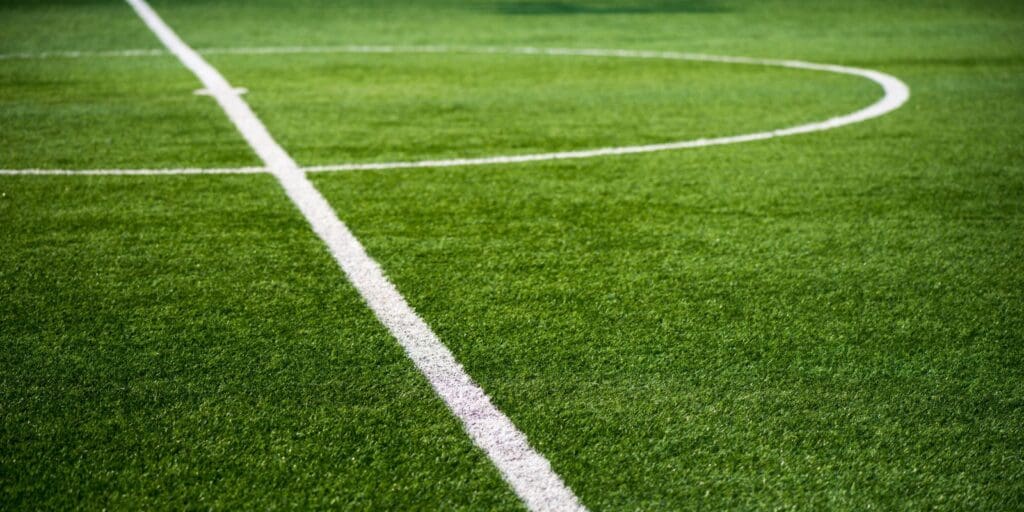Football is a sport that’s rich in tradition, and for many, the vision of a lush green pitch represents the epitome of the beautiful game. However, as technology has advanced, artificial training tools like football mats have emerged, challenging the dominance of natural turf. With the modern world looking for efficient and effective ways to improve skill development, the debate between football mats and natural turf becomes more relevant than ever. But how do these two compare? Let’s dive in.
Football Mats: The Pros
- Uniformity in Training: As mentioned earlier, one of the most significant advantages of football mats is the consistency they provide. Players can train without the distraction of uneven ground, ensuring a focused skill refinement process. This uniformity can be particularly beneficial for beginners who are still familiarizing themselves with the ball and their footwork.
- Durability and Maintenance: Football mats, especially high-quality ones, are built to last. They can endure rigorous training sessions without wearing out quickly. Additionally, unlike natural turf which needs regular mowing, watering, and care, mats are relatively low maintenance.
- Safety: With a grip-friendly surface, football mats can reduce the chances of slipping, thereby preventing potential injuries. They provide a level of cushioning that can act as a shock absorber, minimizing the strain on players’ joints.
Football Mats: The Cons
- Lack of Natural Feel: While mats offer many benefits, they can’t replicate the authentic feel of natural turf. This difference might be a deterrent for purists or those looking for a traditional training experience.
- Heat Retention: On hot days, synthetic materials can retain more heat than natural grass, potentially making the surface uncomfortably warm for play.
Natural Turf: The Pros
- Authentic Experience: There’s something inherently beautiful about playing on a natural grass pitch. It provides an authentic football experience, the kind that players often encounter in matches, making it ideal for simulating real-game conditions.
- Natural Cushioning: Grass, with its underlying soil, offers natural cushioning. This can be easier on the joints and muscles, especially during extended play.
- Temperature Regulation: Natural turf doesn’t retain heat in the same way synthetic materials do, ensuring a cooler playing surface during hot conditions.
Natural Turf: The Cons
- Maintenance: Natural pitches require significant upkeep. They need regular watering, mowing, and treatments to keep them in playable condition.
- Weather Dependence: Natural turf is at the mercy of the elements. Heavy rain can make the ground muddy and slippery, while prolonged dry spells can result in hard and uneven playing surfaces.
- Wear and Tear: High traffic areas, like goal mouths or the center of the pitch, can wear out quickly, leading to bald patches or ruts.
Bridging the Gap with Online Innovations
The evolution of football training has been dramatically impacted by the digital revolution. While traditionalists may argue in favor of keeping the game and its training methods pure, there’s no denying the plethora of advantages offered by online innovations.
- Personalized Training Plans: One of the standout benefits of online platforms is the customization they offer. Players can now access tailored training modules based on their strengths, weaknesses, and progress. These plans can adjust in real-time, depending on a player’s performance, ensuring that the learning curve is always optimal.
- 24/7 Access to Resources: Gone are the days when training was restricted to the hours on the pitch. Players can now engage with training materials, video tutorials, and interactive sessions anytime, anywhere. This flexibility allows for continuous learning, a game-changer in skill development.
- Data-Driven Insights: Online tools often come equipped with analytics capabilities. Whether it’s tracking the speed of a shot, measuring the accuracy of a pass, or analyzing game strategy, data-driven insights provide players with a detailed breakdown of their performance. This objective feedback is invaluable in pinpointing areas for improvement.
- Global Connectivity: The online realm breaks geographical boundaries. Players can connect with coaches from around the world, participate in international webinars, or even compete virtually with peers from different countries. Such global exposure enriches their understanding of the game, exposing them to diverse playing styles and tactics.
- Virtual Reality (VR) and Augmented Reality (AR) Integration: The future of online football training is undeniably exciting with the advent of VR and AR. Players can immerse themselves in simulated match situations, practice in virtual stadiums, or even engage in AR-enhanced drills on their football mat or natural turf. These technologies provide an interactive layer to training, making sessions more engaging and realistic.
- Community Building: Online platforms also offer a sense of community. Players can join forums, engage in discussions, share experiences, and learn from their peers. This camaraderie can be motivational, pushing players to train harder and refine their skills further.
In essence, the synergy between the digital and physical aspects of football training is ushering in a new era for the sport. By integrating online resources with traditional on-field practices, players receive a comprehensive training experience, preparing them for the multi-faceted demands of modern football.
In Conclusion
Both football mats and natural turf have their merits and downsides. Football mats offer consistency and safety, making them an excellent choice for targeted skill development. On the other hand, natural turf provides an authentic playing experience, crucial for translating training into real-match performance.
The decision between the two often boils down to individual preferences, specific training goals, and logistical considerations. For instance, a team based in a city with limited green spaces might find football mats a practical solution, while a club in a rural setting might prefer the expansiveness of natural turf.
Regardless of the choice, the key is to ensure that players receive a well-rounded training experience. And with the integration of online tools, modern football training is poised to be more dynamic and comprehensive than ever before.

